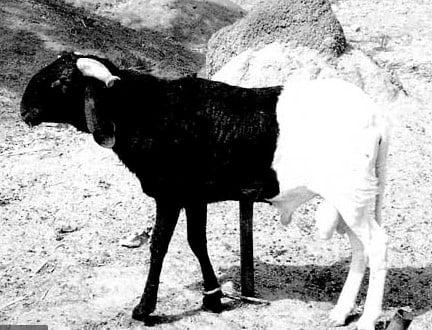The livestock sector is an integral part of agriculture in Nigeria and contributes about 3-4 percent to the Gross Domestic Product (GDP) and 15 percent to the agricultural value added (FMARD, 2016). Ruminants are the most reared livestock in Nigeria. These include goats, sheep, and cattle. Research shows that Nigeria has a population of 34.5 million goats, 22.1 million sheep and 13.9 million cattle (Lawal-Adebowale 2012). These animals are concentrated mainly in the northern region of the country.
With the ever-growing population in Nigeria, demand for livestock products will continually be on the rise. According to FAO 2018 projections, poultry meat, beef, and milk consumption will grow by 253, 117 and 577 per cent, respectively. Several government agencies are therefore making efforts to transform the industry. Livestock keeping serves as a source of income to many Nigerians. It also has both positive and negative impacts on the environment and public health.

With the established continued demand for livestock products, the industry stands as a sector of great opportunity for agribusiness. However, as typical of other sectors, there are dos and don’ts. This column will equip you with the necessary information to navigate the livestock industry successfully. Welcome on board, have a pleasant reading.
Challenges in the Livestock Business
- Insufficient Capital: Every establishment needs funding to thrive, and the Livestock Industry is not exempted. Lack of capital has prevented people interested in farming from doing so, while insufficient funding has resorted to poor staff welfare and salary, inadequate infrastructure, overstocking and subsequently poor management.
- Rising prices of raw materials: The cost of conventional feed ingredients, most especially maize and soybean meal, is constantly increasing. Animals must eat, and livestock farmers are forced to produce or purchase animal feed even as their prices rise. This accounts for why some farmers compromise feed quality which also backfires on them as these animals are a good converter of what they consume. This is a significant factor that results in poor returns for Livestock farmers. Knowing fully well that the government does not subsidize agricultural products and most consumers have restricted access to funds, consumers won’t buy at prices that they cannot afford. As a result, farmers are being forced to sell at a loss.
- Poor management practices: There is no magic to getting optimum farm performance if management is poor. Poor management practices lead to feed wastage, disease outbreaks, high mortality rate and subsequently poor returns on investment. This may occur due to unqualified/untrained personnel working in sensitive positions on the farm. There shouldn’t be room for incompetent people working on the farm as this will open space for poor performance.
- Unfavourable policies: This is perhaps one of the greatest undoing of the Livestock Industry in Nigeria. The government has played a back role in supporting farmers in times of crisis. Who would want to lose out on stock or herds worth millions of naira? This factor is partly responsible for why some farmers would use antibiotics on animals and sell out without following the withdrawal period. This has a detrimental effect on humans as these may have a residual impact in the future. Also, poor road network and epileptic power supply have resulted in increased cost of production.
- Lack of synergy between the Livestock Industry and Technology Industry: The 21st century is known for fast technological advancement, and every sector must embrace this. Most people see this development to get away from the farm, whereas it should be seen otherwise. There are many applications and automated equipment that will improve performance and make work easier if adopted.
- Inadequate cooperation between crop and Livestock Industry: The poor relationship between the Livestock and Crop industry has partly influenced the price of feed ingredients, leaving no room for price control.
Up Next:
- Proposed Solutions to Identified Challenges
- Self-feed formulation: Dos and Don’ts
- The business of goat keeping
- Value Addition in Cattle
- Export Opportunities in the livestock Industry
